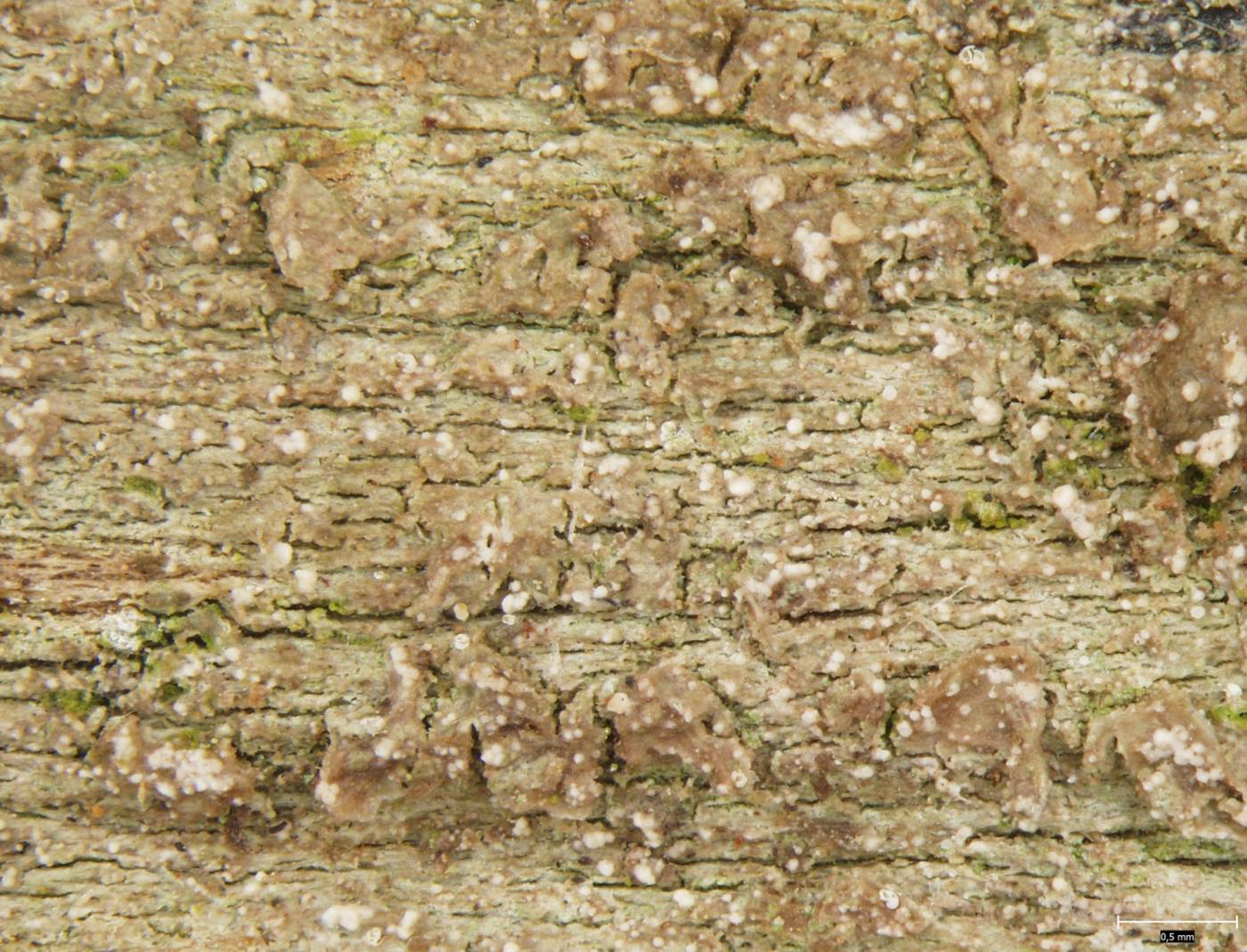A very recently described epixylic species that usually forms a relatively extensive thalli occupied by pale pycnidia attached to the thallus or shortly stalked. The inconspicuous apothecia are formed relatively rarely and usually in clumps. They carry tiny, narrowly ellipsoid to nearly droplet-shaped ascospores. The semi-immersed thallus contains tiny, often prolonged algae of the Stichococcus type.
According to the current knowledge, M. substipitata is a relatively specialised forest lichen requiring slowly decaying but unexposed hardwood. It usually occurs on vertical to overhanging surfaces of large stumps and snags that often has heavily decomposed, permanently wet wood inside and hard upper wooden surface. Most of the findings were made in old-growth forests, but the lichen has been found in places as parks, old avenues or managed forests where a sufficient amount of slowly decaying wood from old trees was left.
The lichen could be theoretically confusable for Biatora veteranorum, a species with broader substrate ecology that usually grows on rather dry and soft wood or even on bark but may be found on harder wood in similar microhabitats to those of * M. substipitata* as well. Biatora veteranorum can be most securely distinguished by pruinose apothecia and pycnidia. However, the presence of fine granules (soluble in KOH) is sometimes not apparent and needs to be explored under a microscope.
Literature: Vondrák J. et al. (2022): From Cinderella to Princess: an exceptional hotspot of lichen diversity in a long-inhabited central-European landscape. – Preslia 94: 143–181.
taxonomic classification:Ascomycota → Lecanoromycetes → Lecanorales → Pilocarpaceae → Micarea
Red List (Malíček 2023):DD – data deficient
Occurrence in the Czech Republic
All records: 21, confirmed 18. One click on a selected square displays particular record(s), including their source(s).

